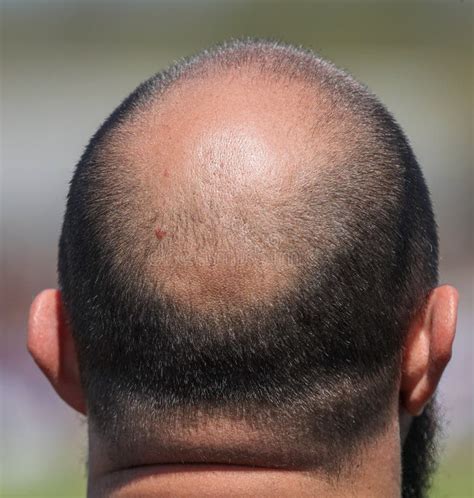Introduction
Bald head patches, a common condition also known as alopecia, can have a significant impact on one’s self-esteem and quality of life. Characterized by the loss of hair in distinct areas of the scalp, it can manifest in various forms, from circular patches to diffuse thinning. Understanding the causes, treatment options, and coping mechanisms can empower individuals to address this condition effectively.

Causes of Bald Head Patches
The causes of bald head patches can be diverse, ranging from genetic factors to environmental triggers:
1. Androgenetic Alopecia (Pattern Baldness)
- Genetics: Inherited genes play a crucial role in determining hair growth patterns.
- Hormones: Androgens, such as testosterone, can trigger hair loss in susceptible individuals.
2. Alopecia Areata
- Autoimmune Disorder: In this condition, the body’s immune system mistakenly attacks hair follicles.
- Stress: Emotional and psychological stress can contribute to the onset of alopecia areata.
3. Telogen Effluvium
- Hair Growth Cycle Disruption: This temporary form of hair loss is triggered by events that interrupt the normal hair growth cycle.
- Stress, Illness, or Medication: Physical or emotional triggers can lead to a shedding of hair within a few months.
4. Traction Alopecia
- Hair Styling Practices: Tight hairstyles, braids, or ponytails that pull on the hair can cause inflammation and damage.
- Prolonged Use: Overuse of styling tools or extensions can further aggravate traction alopecia.
5. Infection or Skin Condition
- Scalp Ringworm (Tinea Capitis): Fungal infection can lead to patchy hair loss and scalp irritation.
- Lichen Planopilaris: A chronic inflammatory skin condition that attacks hair follicles.
Treatment Options
Depending on the cause, various treatment options are available to address bald head patches:
1. Medications
- Minoxidil: Applied topically, it stimulates hair growth in some individuals.
- Finasteride: An oral medication that blocks the action of dihydrotestosterone (DHT), a hormone that contributes to pattern baldness.
2. Laser Treatment
- Low-Level Laser Therapy (LLLT): Uses low-level lasers to stimulate hair growth and improve scalp circulation.
3. Hair Transplantation
- Follicular Unit Extraction (FUE): Individual hair follicles are extracted from donor areas and transplanted to bald spots.
- Follicular Unit Transplantation (FUT): A strip of scalp with healthy hair follicles is removed and transplanted to bald areas.
4. Platelet-Rich Plasma (PRP) Therapy
- Blood Injections: Platelet-rich plasma extracted from the individual’s blood is injected into the scalp to promote hair growth.
Coping Mechanisms
Living with bald head patches can be challenging. Here are coping mechanisms to help individuals navigate this condition:
1. Education and Awareness
- Understand the Condition: Seeking information and connecting with support groups can provide a sense of understanding and control.
- Know Treatment Options: Exploring treatment possibilities can empower individuals to make informed decisions about their care.
2. Self-Esteem and Confidence
- Positive Self-Talk: Encourage positive thoughts and self-acceptance.
- Support System: Surround yourself with supportive family, friends, or therapists who understand the emotional impact of bald head patches.
3. Hair Styling and Concealment
- Hairpieces and Wigs: Offer temporary or more permanent solutions for concealing bald spots.
- Hats and Headwear: Stylish hats and scarves can cover hair loss while enhancing your appearance.
4. Stress Management
- Stress-Reduction Techniques: Exercise, meditation, or yoga can help manage stress and support overall well-being.
- Cognitive Behavioral Therapy (CBT): Therapy can help develop positive coping skills and address emotional challenges associated with hair loss.
Tips and Tricks
To promote hair health and minimize the appearance of bald head patches:
1. Gentle Hair Care
- Use Specialized Shampoos and Conditioners: Formulations designed for thinning hair can nourish and strengthen follicles.
- Avoid Harsh Treatment: Limit the use of heat styling tools and chemical treatments.
2. Scalp Care
- Massage and Exfoliate: Regular scalp massages and exfoliation can improve circulation and remove dead skin cells.
- Use Scalp Treatments: Leave-in serums or masks containing ingredients like caffeine or peptides can support hair growth.
3. Diet and Nutrition
- Healthy Diet: Consume nutrient-rich foods, including fruits, vegetables, and whole grains.
- Biotin Supplements: Biotin is a B vitamin that supports hair growth and strengthens hair shafts.
Comparison of Treatment Options
| Treatment Option | Mechanism of Action | Effectiveness | Duration | Side Effects |
|---|---|---|---|---|
| Minoxidil | Stimulates hair growth | Moderate | 6-12 months | Scalp irritation |
| Finasteride | Blocks DHT | Moderate-high | 3-6 months | Risk of sexual side effects |
| Laser Treatment | Enhances circulation | Low-moderate | 6-12 months | Minimal |
| Hair Transplantation | Transfers hair follicles | High | Permanent | Scarring, itching |
| PRP Therapy | Injects platelet-rich plasma | Moderate | 3-6 months | Pain at injection site |
Conclusion
Dealing with bald head patches can be a multifaceted experience, affecting both physical and emotional well-being. By understanding the causes, exploring treatment options, and developing coping mechanisms, individuals can effectively address this condition and maintain a sense of self-confidence and well-being. Remember, hair loss is not a sign of weakness or failure, but a condition that can be managed and overcome.
